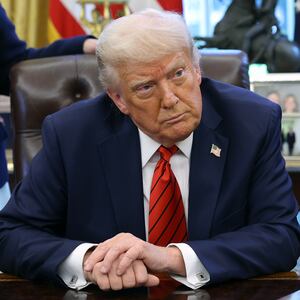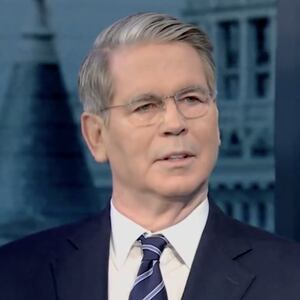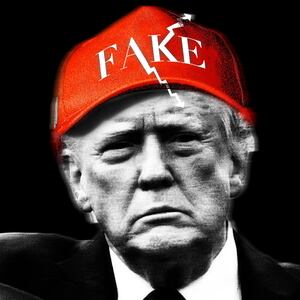President Donald Trump‘s economic policies have already shrunk the U.S. economy for the first time in three years.
A report released Wednesday by the official U.S. Bureau of Economic Analysis found gross domestic product had contracted last quarter by an annualized rate of 0.3 percent, The Washington Post reported.
It was the first deceleration recorded by the U.S. government agency since early 2022, when the global economy was suffering from supply chain shortages brought on by the COVID-19 pandemic.
ADVERTISEMENT
Trump quickly tried to blame his predecessor Joe Biden, who oversaw three years of solid growth.
“This is Biden’s Stock Market, not Trump’s,” the president wrote on social media soon after the news broke Wednesday. “I didn’t take over until January 20th. Tariffs will soon start kicking in, and companies are starting to move into the USA in record numbers.”
“This will take a while, has NOTHING TO DO WITH TARIFFS, only that he left us with bad numbers, but when the boom begins, it will be like no other. BE PATIENT!!!” he added.
In fact, the tariffs were largely to blame for the fall in GDP, which measures the sum of all goods and services produced in the country, the Post reported. Uncertainty about the president’s sweeping tariff policies led to a dramatic increase in imports, which count against the broadest measure of the economy.
The situation was exacerbated by lower government spending, as the federal government canceled hundreds of billions of dollars in contracts and grants. Consumer spending also took a hit, with Americans pulling back on unnecessary purchases amid fears of a potential recession, according to the Post.
“Growth has simply vanished,” Chris Rupkey, chief economist at the financial research firm Fwdbonds, wrote in a note to clients after the report’s release. “Maybe some of this negativity is due to a rush to bring in imports before the tariffs go up, but there is simply no way for policy advisors to sugar-coat this.”
Trump announced a “Liberation Day” on April 2 as he unveiled universal 10 percent tariffs against all products entering the U.S. from other countries. Additional tariffs were added for products from countries with which the U.S. has large trade deficits, including China.
The duties are an import tax paid by American companies, with the added costs typically passed on to consumers. Other countries vowed to retaliate against the measures, leading to a tit-for-tat with China that ended with Trump imposing a 145 percent duty on all Chinese products and China announcing a 125 percent tax on American products.
Americans have rushed to buy foreign-made cars, electronics, clothing, and furniture this month before prices go up, the Post reported. As a result, the trade deficit is the largest it’s ever been.
Once they do, the added costs are projected to be so high that the tariffs will serve as de facto trade embargoes, with companies in both the U.S. and China saying they can’t sell at those prices.
CEOs of major retail giants warned last week that prices would rise and shelves would soon be empty if the president didn’t reverse course.
The trade wars have also sent global stock markets tumbling—wiping out trillions of dollars in value—and even shaken the usually stable U.S. bond markets.
The S&P 500 has fallen 8 percent since Trump’s inauguration—its worst run during a president’s first 100 days in office in more than 50 years.
In response, voters have voiced deep dissatisfaction with the president’s economic policies.
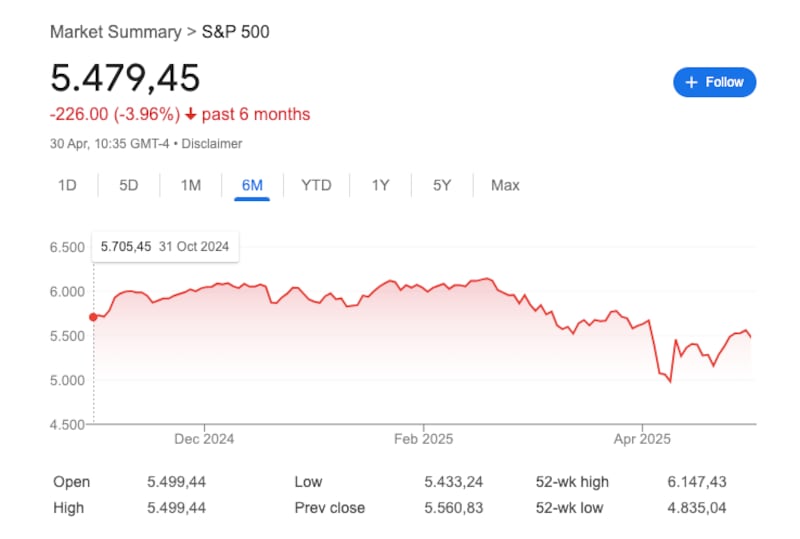
A Fox News poll found last week that just 38 percent of respondents approved of Trump’s handling of the economy. His tariffs and inflation policy received a dismal 33 percent approval rating.
Over the past week, the president has oscillated between insisting that everything is fine and the tariffs are working, and apparently trying to reassure investors by saying he’s working to de-escalate the trade war with China.
He told reporters the two countries are “actively” negotiating to lower the tariff rates—a statement Beijing has flatly denied. The Trump administration has also been busy carving out exceptions for specific industries.
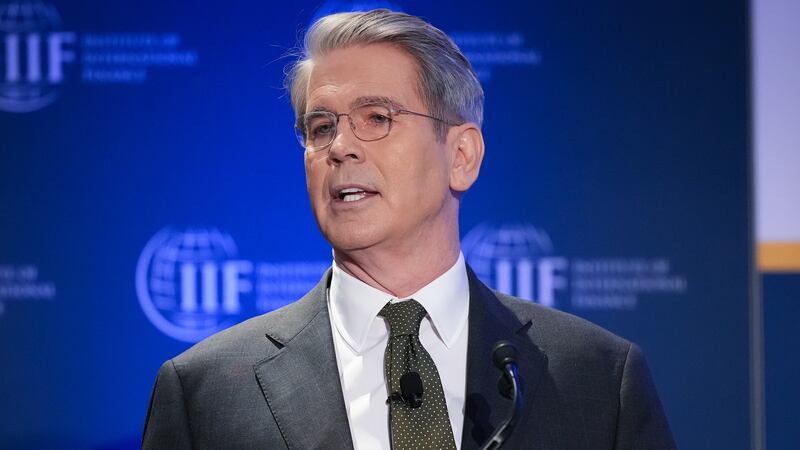
Treasury Secretary Scott Bessent said this week he had no idea whether Trump was really negotiating with China or not.
“We have a process in place,” he said. “I just believe these Chinese tariffs are unsustainable.”


